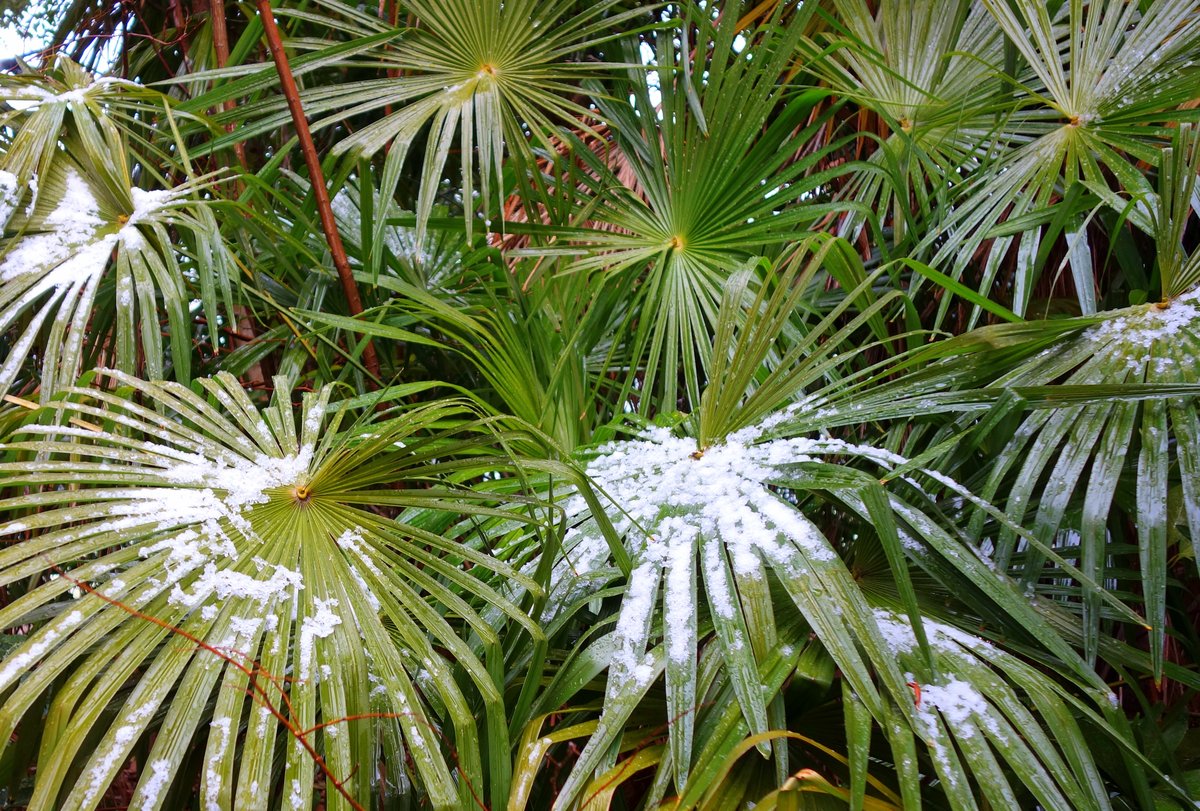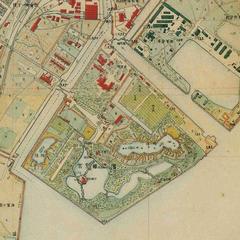
Hamarikyu Gardens Tokyo: Visiting Hours, Tickets, and Comprehensive Visitor Guide
Date: 14/06/2025
Introduction
Hamarikyu Gardens, nestled in central Tokyo, stands as a testament to Japan’s enduring cultural heritage and natural beauty. Originally designed as a feudal lord’s residence and hunting grounds during the Edo period, the garden has evolved into a tranquil oasis amid Tokyo’s modern skyline. Renowned for its unique tidal seawater pond, historic teahouses, and centuries-old pine trees, Hamarikyu blends sophisticated Edo-era design with contemporary conservation and accessibility. This guide provides essential visitor information, historical context, travel tips, and a look at ongoing conservation efforts and future enhancements, ensuring you make the most of your visit to this iconic Tokyo historical site (Japan Travel; Junket Japan; Klook).
Contents
- Introduction
- Historical Background and Cultural Significance
- Garden Design and Symbolism
- Visiting Information: Hours, Tickets, Location
- Travel Tips and Nearby Attractions
- Annual Events and Cultural Practices
- Conservation Initiatives and Future Developments
- Accessibility and Visitor Facilities
- Key Attractions and Photographic Highlights
- Frequently Asked Questions (FAQ)
- References and Official Links
- Conclusion and Call to Action
Historical Background and Cultural Significance
From Edo Lords to Imperial Retreat
Established in the 17th century, Hamarikyu Gardens (浜離宮恩賜庭園, Hama-rikyū Onshi Teien) began as a feudal lord’s villa on reclaimed land at the Sumida River’s mouth. Commissioned by the Tokugawa shogunate, the estate functioned as both a secondary residence and as hunting grounds—a status reflected in its preserved duck blinds and falconry fields (junketjapan.com; 2hugeinjapan.com).
During the Meiji period, following the fall of the shogunate, the garden became an imperial detached palace. Western-style guesthouses were introduced, and the grounds hosted foreign dignitaries, symbolizing Japan’s transformation and openness to the world.
Restoration and Preservation
World War II air raids destroyed many original structures, but postwar restoration efforts revived key features, including the Nakajima-no-ochaya teahouse and the iconic 300-year-old black pine. In 1945, the Imperial family donated the gardens to the city, opening them to the public as a symbol of resilience (junketjapan.com).
Garden Design and Symbolism
Hamarikyu Gardens is a classic example of Edo-period stroll gardens (kaiyu-shiki teien), harmoniously blending natural elements and man-made artistry.
- Shioiri-no-ike (Tidal Pond): The only remaining Edo-period seawater pond in Tokyo, filled from Tokyo Bay and changing with the tides. It supports marine life like mullet and sea bass, reflecting the garden’s dynamic relationship with nature (klook.com).
- Teahouses: The Nakajima-no-ochaya teahouse sits on an island within the pond, accessible by wooden bridges. Here, visitors can partake in authentic tea ceremonies and enjoy seasonal views (junketjapan.com).
- 300-Year-Old Black Pine: Planted by the sixth Tokugawa shogun, this majestic tree is a living link to the garden’s origins (2hugeinjapan.com).
- Duck Hunting Grounds: Preserved blinds and memorials evoke the samurai era’s leisure culture.
- Seasonal Flower Fields: Plum blossoms, rapeseed, cherry blossoms, peonies, and cosmos ensure year-round visual interest (sg.trip.com).
Bridges, winding paths, stone lanterns, and carefully pruned groves invite exploration and reflection, while borrowed scenery (shakkei) incorporates Tokyo’s ever-evolving skyline.
Visiting Information: Hours, Tickets, Location
Hours
- Open: Daily, 9:00 AM – 5:00 PM (last admission 4:30 PM)
- Closed: December 29–31 (some sources also note closure on Mondays or the following day if Monday is a national holiday—check official website for updates)
Admission Fees
- Adults: 300 yen
- Seniors (65+): 150 yen
- Children (junior high and younger): Free
- Free Entry Days: Greenery Day (May 4), Tokyo Citizen’s Day (October 1)
- Tickets are available at the entrance; group discounts may apply (Japan Travel Forecast).
Location & Access
- Address: 1-1 Hamarikyū-teien, Chuo City, Tokyo 104-0046, Japan
- Nearest Stations:
- Shiodome Station (Toei Oedo Line, Yurikamome Line): 7 mins walk
- Shimbashi Station (JR, Tokyo Metro Ginza Line): 12 mins walk
- Tsukiji-shijo Station (Toei Oedo Line): 7 mins walk (Japan Travel Forecast)
- Waterbus Access: Arrive via Tokyo Cruise Ship Co., Ltd. from Asakusa; garden admission is included in the fare.
Travel Tips and Nearby Attractions
- Best Visiting Times: Spring (cherry blossoms/rapeseed), autumn (colorful foliage), and early mornings or weekdays for fewer crowds (Trip.com Moments).
- Nearby Attractions: Tsukiji Outer Market (seafood and street food), Ginza (shopping), Shiodome (modern dining), and traditional Kyu Shiba Rikyu Garden.
- Accommodation: Numerous hotels in Ginza, Shiodome, and Asakusa—book early during peak seasons.
Annual Events and Cultural Practices
- Tea Ceremonies: Regularly held at Nakajima-no-ochaya teahouse—enjoy matcha and wagashi in a tranquil setting (klook.com).
- Falconry Demonstrations: January 2–3 for New Year’s celebrations.
- Cherry Blossom Festival: Late March–early April.
- Tokyo Grand Tea Ceremony: October, featuring large-scale traditional tea events (jal.japantravel.com).
- Autumn Leaves Festival: November, showcasing seasonal color.
Conservation Initiatives and Future Developments
Historical Restoration
Postwar restoration has preserved the garden’s Edo-period landscape, including the reconstruction of historic teahouses and maintenance of the unique tidal pond (Wikipedia; thetravelshots.com).
Biodiversity and Sustainability
Sustainable practices maintain soil health, support pollinators, and protect urban wildlife. Water quality in the tidal pond is regularly monitored, and educational signage encourages responsible visitor behavior (thegate12.com; medium.com).
Future Enhancements
- Infrastructure Upgrades: Improved signage, barrier-free paths, and integration with urban redevelopment projects in Shiodome and Ginza (e-housing.jp).
- Digital Interpretation: Introduction of multilingual audio guides and AR experiences.
- Expanded Programming: More workshops, educational activities, and volunteer opportunities.
- Ecological Restoration: Ongoing efforts to enhance biodiversity and climate resilience.
Accessibility and Visitor Facilities
- Paths: Mostly paved and accessible, though some bridges may be less navigable for wheelchairs or strollers (Accessible Japan).
- Restrooms: Multiple accessible toilets; some are within gendered facilities.
- Teahouse: Nakajima-no-ochaya is not fully wheelchair accessible inside, but the island can be viewed externally.
- Maps and Pamphlets: Available in multiple languages at entrances.
- Guided Tours: Free English tours by volunteers—check schedules upon arrival (Tokyo Park).
Key Attractions and Photographic Highlights
- Shioiri-no-ike Tidal Pond: Unique seawater pond with dynamic views.
- Nakajima-no-ochaya Teahouse: Traditional architecture and matcha experience.
- 300-Year-Old Pine Tree: Iconic photo spot near the main entrance.
- Duck Hunting Grounds: Historic blinds and memorials.
- Seasonal Flower Fields: Year-round blooms—plum, cherry, peony, cosmos, maple.
- Skyline Vistas: Striking contrasts of Edo-period tranquility and modern Tokyo.
Frequently Asked Questions (FAQ)
Q: What are the visiting hours?
A: 9:00 AM–5:00 PM (last entry 4:30 PM). Closed December 29–January 3 and sometimes Mondays (or following day if Monday is a national holiday).
Q: What are the ticket prices?
A: Adults 300 yen; seniors (65+) 150 yen; children (junior high and younger) free.
Q: Is the garden wheelchair accessible?
A: Yes, most paths and facilities are accessible, but some bridges and the interior of the central teahouse may not be.
Q: Are guided tours available?
A: Yes, free English tours are offered by volunteers. Confirm availability at the entrance.
Q: Can I picnic in the gardens?
A: Picnicking is not permitted, but you can enjoy tea and sweets at the teahouse.
Q: When is the best time to visit?
A: Spring (cherry blossom season) and autumn (foliage season) for seasonal highlights; weekdays and early mornings for fewer crowds.
References and Official Links
- Hamarikyu Gardens Guide – Junket Japan
- Hamarikyu Gardens Visiting Information – Japan Travel
- Visitor Experience & Practical Info – Japan Travel Forecast
- Hamarikyu Gardens Details – Klook
- Hama-rikyū Gardens – Wikipedia
- Hamarikyu Gardens Conservation – thetravelshots.com
- Edo-Period Engineering – thegate12.com
- Accessibility Review – Accessible Japan
- Tokyo Park Guide
- Tokyo Grand Tea Ceremony 2025 – jal.japantravel.com
- Tokyo 2025 Projects – e-housing.jp
- Medium: Hamarikyu Gardens Article
- Trip.com Moments: Hamarikyu Gardens
- JW Web Magazine
Conclusion and Call to Action
Hamarikyu Gardens offers a rare opportunity to step back into Edo-period Japan while enjoying urban Tokyo’s modern comforts. With its meticulously restored landscapes, historic teahouses, and ongoing innovations in conservation and accessibility, the garden delivers a rich cultural and ecological experience. For up-to-date visiting hours, ticket details, and event information, consult official resources and leverage the Audiala app for real-time updates, virtual tours, and travel tips. Embrace the tranquility, history, and beauty of one of Tokyo’s most cherished historical gardens—plan your visit to Hamarikyu Gardens today!






























































































































































































































